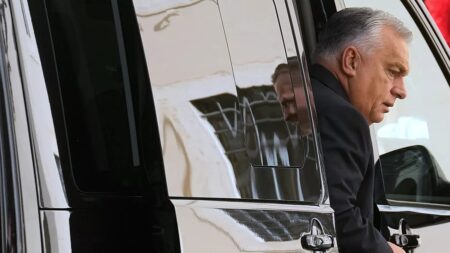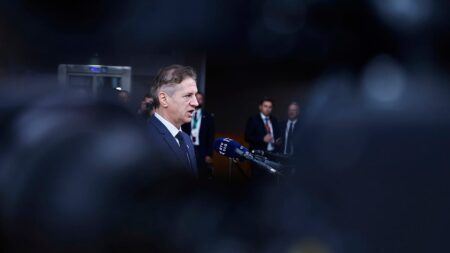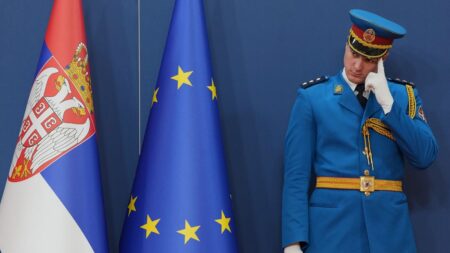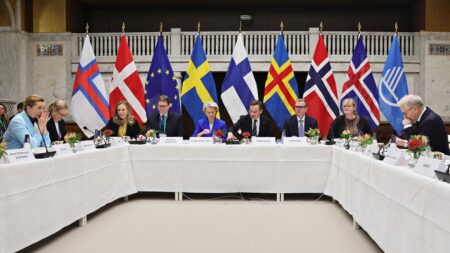Belgium has found itself the butt of several jokes online, after various French media outlets reported that the country bought a fleet of F-35 fighter jets that it won’t be able to use, because its airspace is too small.
The articles all begin with the same sentiment, leaning into the friendly French-Belgian rivalry by referring to a “blague belge”, or “Belgian joke”, and noting the €5.6 billion sum that the government in Brussels shelled out for 34 of the US-made jets back in 2018.
However, there’s just one problem, according to the French articles: being a small country, it won’t have enough room to conduct any training exercises with them, as doing so would impact civil aviation.
However, the jokes are making a mountain out of a molehill, according to Belgium’s Defence Minister Theo Francken.
Taking to X, he explained that the small size of Belgium’s airspace is nothing new and that, to make up for it, the country has been carrying out aerial training exercises both at home and abroad with other jets for years.
It’s the same story for the F-35s, he said, noting that they’re more sophisticated and have a greater range than the F-16s that Belgium used before them.
The F-35s are said to be equipped with sensors which substantially increase their operating range.
As well as planned exercises in Belgium, he said that the country is currently in talks with the Netherlands, Norway, Italy and other countries to allow its pilots to train in their airspaces, and that, ultimately, that’s what the NATO alliance is for.
He also assured that military training exercises would not affect commercial flights and that there’d be enough room for both in Belgium’s skies, despite a 700% increase in civil traffic over the country since 1980.
The average total number of flights in Belgium and Luxembourg in 2025 is approximately 3,300 flights per day, according to international aviation organisation Eurocontrol, with an average of approximately 70% of traffic consisting of overflights. The numbers fluctuate depending on the season.
The Cube, Euronews’ verification team, also reached out to Virginie Flawinne, senior captain at the Belgian Air Force, who confirmed much of what Francken said.
“It’s still possible to carry out part of the training in Belgium,” she said in an email. “However, training in a realistic and effective manner to counter the most modern threats requires access to larger airspace for training in Belgium and abroad.”
She said that the need to train beyond the country’s borders isn’t a new requirement, but that it’s becoming more critical as missions and the capabilities of Belgium’s adversaries evolve.
“The current areas are already too small for certain types of missions carried out by the F-16s,” Flawinne said. “As a result, complex exercises, alongside the use of flight simulators, will need to continue to be carried out abroad.”
“The proposed solution is, more than ever, international cooperation,” she added.
Belgium’s Directorate General for Air Transport did not respond to our request for comment as of the time of publishing.
Franco-Belgian ‘dogfight’
The size of Belgium and its airspace aren’t the only things about the fighter jets that the French media have been poking fun at.
Several have reported that four F-35s were supposed to be delivered to Belgium on 13 October, but that only three arrived.
The fourth is currently stuck on the Portuguese island of Terceira, in the Azores archipelago, following a technical malfunction. A team from the jets’ manufacturer, Lockheed Martin, has been sent to repair it.
Some French articles have also reported on the supposed superiority of France’s home-made Dassault Rafale fighter jets compared to the F-35s, based on reports that the two planes took part in a simulated dogfight as part of a NATO exercise in Finland last year, which saw the Rafale come out victorious.
French proponents of the Rafale say that it is more flexible and reliable and boasts cheaper hourly operating costs. They also say that they grant France greater strategic autonomy, as they rely on a domestic manufacturer rather than foreign (particularly US) providers.
However, Francken, a member of the conservative, Flemish nationalist N-VA party, has dismissed these claims too, stating in an interview with Flemish news outlet De Morgen that the F-35 is “quite simply the best fighter jet”.
“The Russian drones over Poland were shot down by Dutch F-35s,” he reportedly said. “The radar systems in the Rafale and the F-16 don’t even see those things.”
Similarly, Joren Vermeersch, advisor to the N-VA, recently said in an op-ed that the F-35 outclasses the rest.
“In [a] single factory, Lockheed Martin builds 15 F-35s per month. This is equivalent to the entire annual production of the French Rafale,” he said. “Moreover, technologically, the F-35 has no rival.”
Read the full article here

















